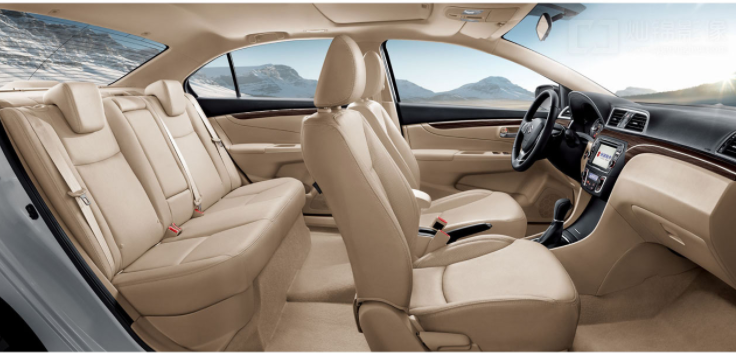
Basic knowledge of automotive ECU
ECU (Electronic Control Unit) electronic control unit, also known as "trip computer", "vehicle computer" and so on. In terms of use, it is a special-purpose microcomputer controller for automobiles. Like an ordinary computer, it consists of a microprocessor (CPU), memory (ROM, RAM), input/output interface (I/O), analog-to-digital converter (A/D), and large-scale integrated circuits such as shaping and driving. composition. In a simple word to describe it is "ECU is the brain of the car".
Automobile engine control system generally consists of four major parts: intake system, fuel supply system, ignition system, and computer control system. The air intake system is composed of air filter, air flow meter, throttle valve, intake manifold, intake manifold, etc. It provides the required air for the engine combustible mixture; the fuel supply system consists of fuel pump, fuel filter, It is composed of fuel pressure regulator, fuel injector and fuel supply pipe, which provides the required fuel for the combustible mixture of the engine; the ignition system provides electric sparks for the engine, which consists of ignition electronic components, ignition coils, spark plugs, high-voltage wires, etc.; The computer control system consists of an electronic control unit (ECU) and various sensors, which control the fuel injection time and injection quantity, as well as the ignition timing.
The electronic control unit (ECU) of the automobile engine is the core of the automobile engine control system. It can provide the engine with the mixture of the best air-fuel ratio and the best ignition time according to the different working conditions of the engine, so that the engine is always in the best working condition. , the performance of the engine (power, economy, emissions) to achieve the best.

Controls that can be achieved by the engine ECU
1. Control of fuel injection mode: up to 4 injections can be achieved per working cycle (currently, the National III diesel engine only uses two per cycle—pre-injection and main injection).
2. Fuel injection quantity control: including pre-injection fuel quantity self-learning control and deceleration fuel cut-off control.
3. Fuel injection timing control: including main injection timing, pre-injection timing and timing compensation.
4. Rail pressure control: including normal and fast rail pressure control, rail pressure establishment and overpressure protection, fuel injection pressure relief control and rail pressure Limp home (travel home, control.
5. Torque control: including transient torque control, acceleration torque control, low-speed torque compensation, maximum torque control, transient smoke control and supercharger protection control.
6. Overheat protection: When the coolant temperature, oil temperature, and intake air temperature are too high, the ECU will enter the overheat protection function to limit the engine power.
7. Balance control of each cylinder.
8. EGR control.
9. Variable section supercharger VGT control.
10. Auxiliary start control (motor and glow plug, .
11. System status management.
12. Power management.
13. Troubleshooting.
ECU is composed of MCU (microprocessor), input circuit, output circuit, A/D converter and parts. The functions of each part are described as follows:
(1) Input circuit
The signal from the sensor first enters the input loop. For the analog signal, the clutter interference is removed, the small signal is amplified, and the sine wave is turned into a rectangular wave; for the digital signal, it can be directly expanded with the MCU or I/O after buffering. circuit connection. At the same time, the input circuit also converts the power supply voltage into a work suitable for the use of the microcomputer. That is, the input circuit is to shape the signal and provide the unrealized working voltage required by each part of the system.
(2) A/D converter
There are two types of sensor signals input to the ECU: one is an analog signal and the other is a digital signal. The form of the signal is different, and the processing method in the input ECU is also different. The digital signal can be sent directly to the microprocessor, and the analog signal must be converted into a digital signal by an A/D converter (analog/digital converter) before being sent to the microprocessor. The early MCU itself does not have the function of A/D converter. In order to complete such conversion, it can be realized by extending the A/D converter. Such as Mercedes-Benz's CIS-E system is achieved through an A/D converter such as A/D0809. Newer types of MCUs do not need external expansion due to their own A/D conversion functions.
(3) Output circuit
It is the connection circuit between the microcomputer and the actuator. Since the output of the microcomputer is a digital signal and the current is very small, it is generally impossible to drive the actuator to work. After passing through the output loop, sufficient driving current is provided through the amplification of the power triode or the power MOS tube, and most of the loads work in the switching state.
In the specific working environment of automobiles, most of the actuators/actuators are related to coils, from electromagnetic injectors to solenoid valves, various motors, relays, including ignition coils, etc. Therefore, some people exaggerately say, The essence of the task of the output circuit of the car is to drive the coil to work. We don't care whether this conclusion is too arbitrary, but this description is relatively easy to understand.
(4) Microprocessor (MCU)
It is the core part of ECU, which consists of central processing unit (CPU), memory (ROM-RAM), input/output port (I/O) and so on. It can use the program and data in the memory to compare, operate and modify the signals sent by various sensors according to the needs, and send the processing results to the output circuit in the form of instructions. Drive related components to complete the control function.
